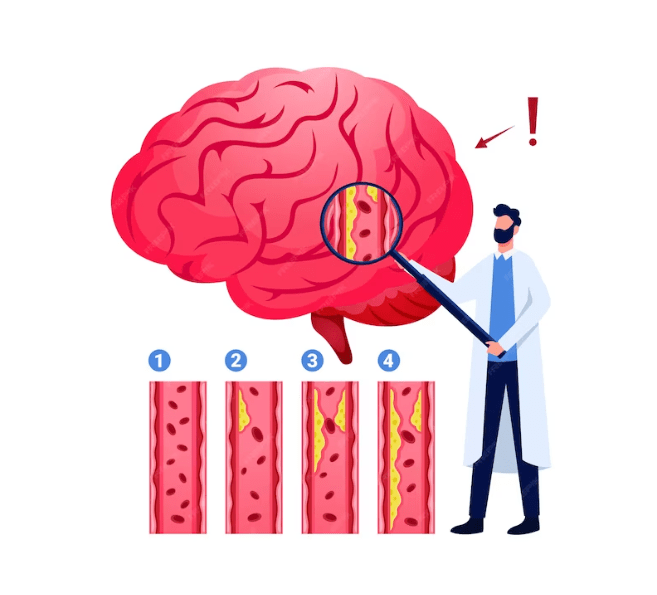Neurological Complications of Lyme Disease
Overview

Dealing with Lyme disease can be like a game of tag with your nervous system. Those sneaky Lyme bacteria sometimes decide to play tricks, messing around with your nerves.
- Facial Funk: They might cause facial palsy, making your face droop on one or both sides.
- Weird Sensations: Nerves in your arms or legs might go haywire, giving you tingling, numbness, or shooting pains.
- Meningitis Madness: Lyme can also trigger Lyme meningitis, bringing along a fever, headache, light sensitivity, and a stiff neck.
Symptoms
- Sure, here are some symptoms of neurological complications due to Lyme disease:
- -Facial palsy or drooping on one or both sides of the face.
- -Numbness or tingling sensations. -Shooting or sharp pains in the arms or legs.
- -Fever accompanied by a headache.
- -Light sensitivity.
- -Stiffness in the neck.
- -Problems with memory or concentration.
- -Muscle weakness.
- -Difficulty with balance or coordination.
Causes & Risks
- -Bug Invasion: Lyme disease kicks off with a tick bite, letting this bug travel through your body, crashing the nervous system’s party and causing problems.
- -Nerve Invasion: This bug can sneak past your brain’s defense system, getting into the central nervous system and messing with your brain and spine, leading to various nerve issues.
- -Inflammation Alert: Your body’s fighting back, but sometimes the immune system’s response can cause more trouble, damaging nerves and causing nerve-related symptoms.
- -Nerve Mishaps: Lyme nerve issues can bring headaches, facial nerve drooping, and other severe stuff like meningitis or spinal nerve inflammation.
- -Risk Factors: Waiting too long for treatment, facing many tick encounters, or having a weak immune system can increase the chance of these nerve complications.
Test & Diagnosis
- Diagnosing nerve trouble from Lyme disease is like solving a tricky puzzle, mixing checks and symptoms. Here’s how docs usually spot it:
- -Health Check: Doc checks your history, asks about tick hangouts, and looks for nerve-related issues like headaches, face droop, nerve pain, brain fog, or meningitis-style symptoms.
- -Blood Test: They draw blood to check for antibodies against the Lyme bacteria. They use fancy tests like EIAs and Western blots to confirm these antibodies.
- -Spinal Tap: Sometimes, they do a spinal tap, checking fluid around your spine for signs of infection or inflammation.
- -Picture Perfect: If needed, they might peek into your brain or spine with MRI or CT scans, searching for funky signs of Lyme nerve troubles.
Treatment
- When your face goes droopy or you get meningitis from Lyme, doctors use antibiotics. They might give you pills or stick ’em in your veins, depending on how bad it is.
- Usually, antibiotics work like superheroes, making most folks with Lyme disease bounce back completely. But if you wait too long to treat it, the nerve damage could stick around, especially in late-stage Lyme. So, early treatment is like the hero move here to avoid any lingering nerve issues down the road.
Living With
- Living with nerve issues due to Lyme disease can be challenging. To manage these difficulties, it is important to team up with doctors who have expertise in treating Lyme’s nerve problems and go for regular check-ups to monitor symptoms. Following the doctor’s prescribed medication plan, which may include antibiotics or other medications to tackle symptoms and fight bacteria, is crucial.
- The treatment course may vary depending upon individual nerve issues, and may involve pain relief, exercises, brain workouts, or other tailored treatments. Emotional support from family, friends, and others who have faced similar battles can also be beneficial. Additionally, maintaining a healthy diet, regular exercise regimen, and getting enough rest can contribute to better overall well-being.
Complications
- Lyme disease can cause a variety of nerve issues that can be difficult to deal with. Even after receiving treatment with antibiotics, some individuals may still experience ongoing nerve problems, including brain fog, tiredness, nerve pain, and sleep disturbances. Lyme can also affect the nerves, leading to peripheral neuropathy, which can cause tingling, numbness, weakness, or pain in the arms and legs. Additionally, the disease can cause meningitis and inflammation in the brain (encephalitis), resulting in headaches, a stiff neck, confusion, seizures, and, in severe cases, a coma. Early detection and treatment of these nerve issues can make a significant difference in how well the individual fares. Lyme disease’s nerve twists can be challenging, but with prompt care and attention, they can be managed effectively.





